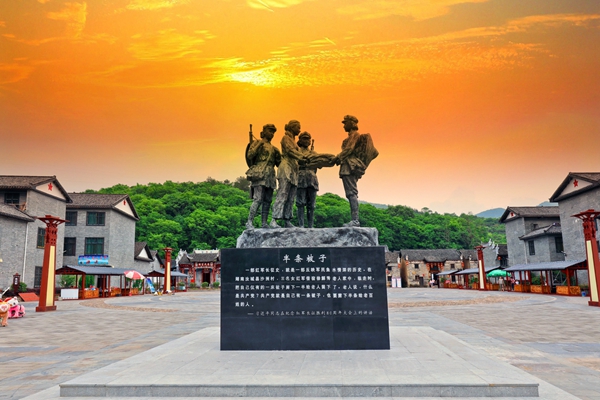High Value of Cultural Studies of Shazhou Red Tourism Scenic Spot

In early November 1934, after breaking through the second blockade in Rucheng County, the central red army arrived at Wenming Shazhou and camped for seven days. The former site of the general headquarters of the Chinese Workers' and Peasants' Red Army, the former site of the General Political Department of the Chinese Workers' and Peasants' Red Army and the place the long march declaration was issued, the former site of the General Logistics Department of the Chinese Workers' and Peasants' Red Army, the former site of the general health department of the Chinese Workers' and Peasants' Red Army, the former site of the garrison headquarters of the Central Red Army, the former site of the Chinese Soviet National Bank, the place the story of "Half a Quilt" took place (Xu Jiexiu's former residence), and the former residence of Mao Zedong, Zhu De and other leaders of the Central Red Army. The revolutionary stories, cultural relics and relics handed down include "Half a Quilt", Red Army loan receipt, Red Army medicine box, Red Army book, a rattan bowl, Red Army tomb, world family, and Zhu De's escape from danger.
Why did the Central Red Army choose to rest here? Why does the story of "Half a Quilt" happen here? Why can the story of "Half a Quilt" become the only long march story quoted by General Secretary Xi in his speech commemorating the 80th anniversary of the victory of the Red Army's Long March? How does the "Half a Quilt" embody the original intention and mission of the Communists? All of these have high value of cultural research, and it is in line with the needs of the development of the times to conduct in-depth excavation and research.
In addition, Shazhou Red Tourism Scenic Spot has high historical and cultural value in terms of architecture's long-term, historical significance and cultural connotation, inherits Chinese Confucianism and red revolutionary spirit, and its architectural structure has high scientific value, which is of great significance for studying the history of ancient architecture in southern Hunan and understanding local folk culture.




